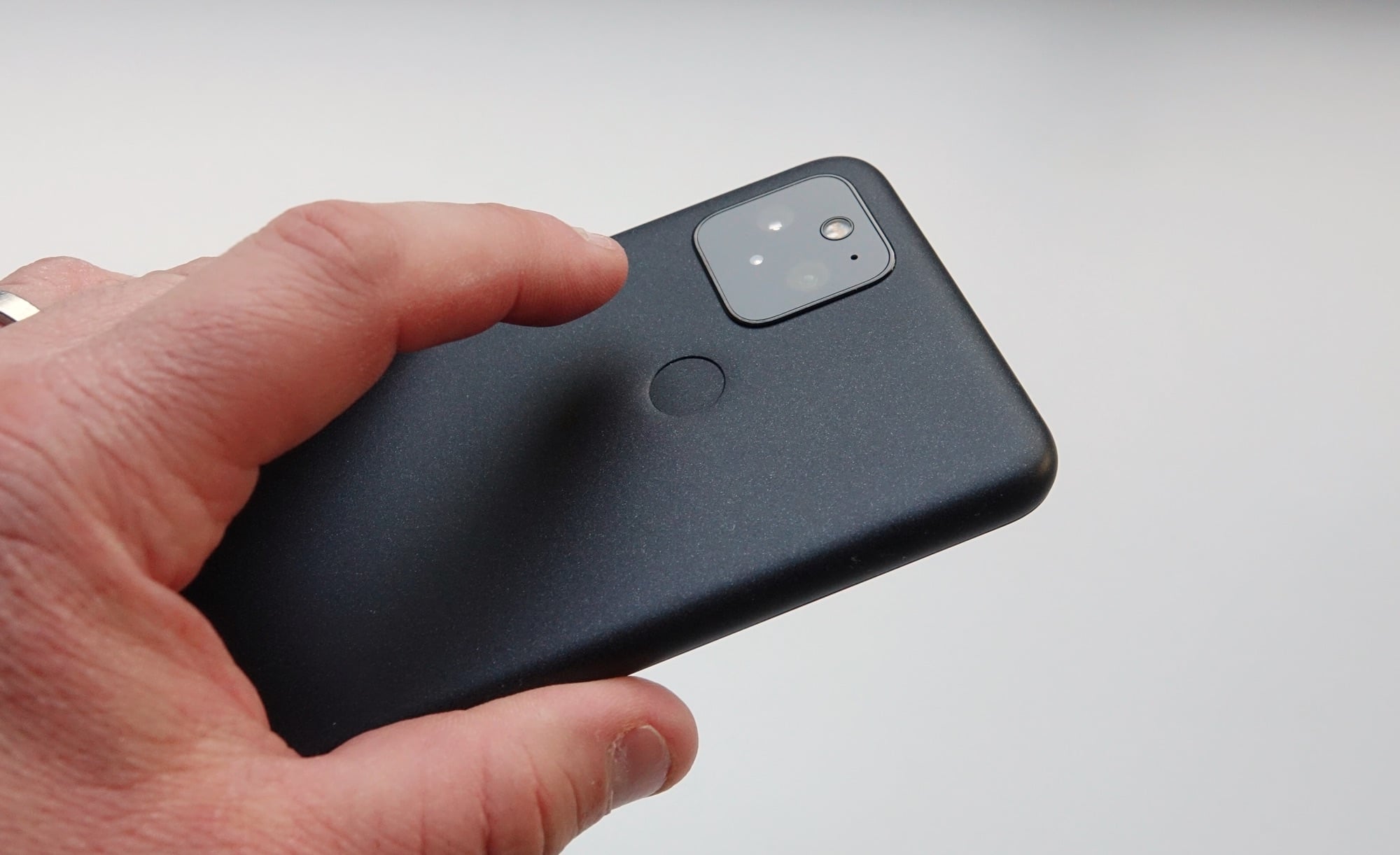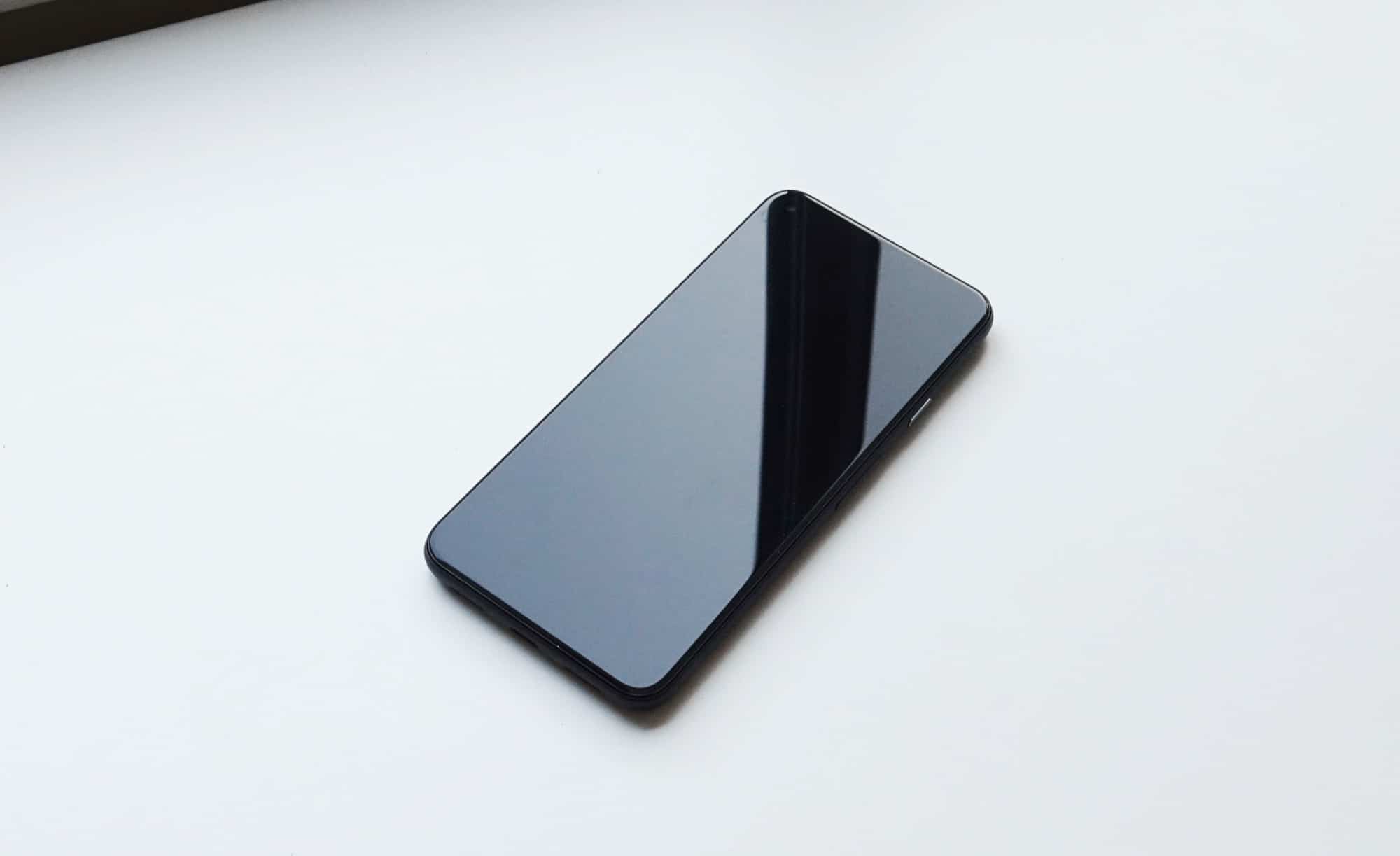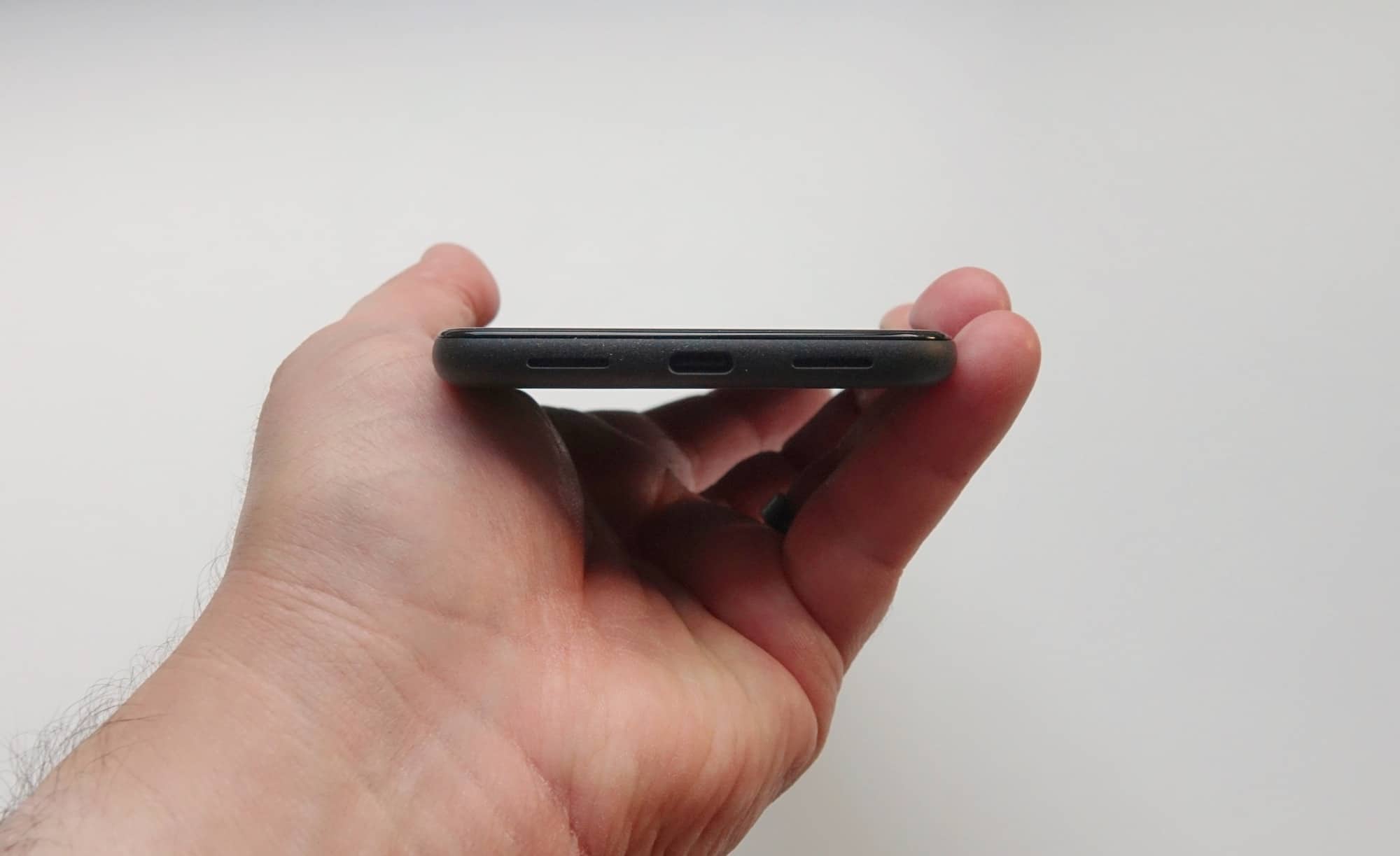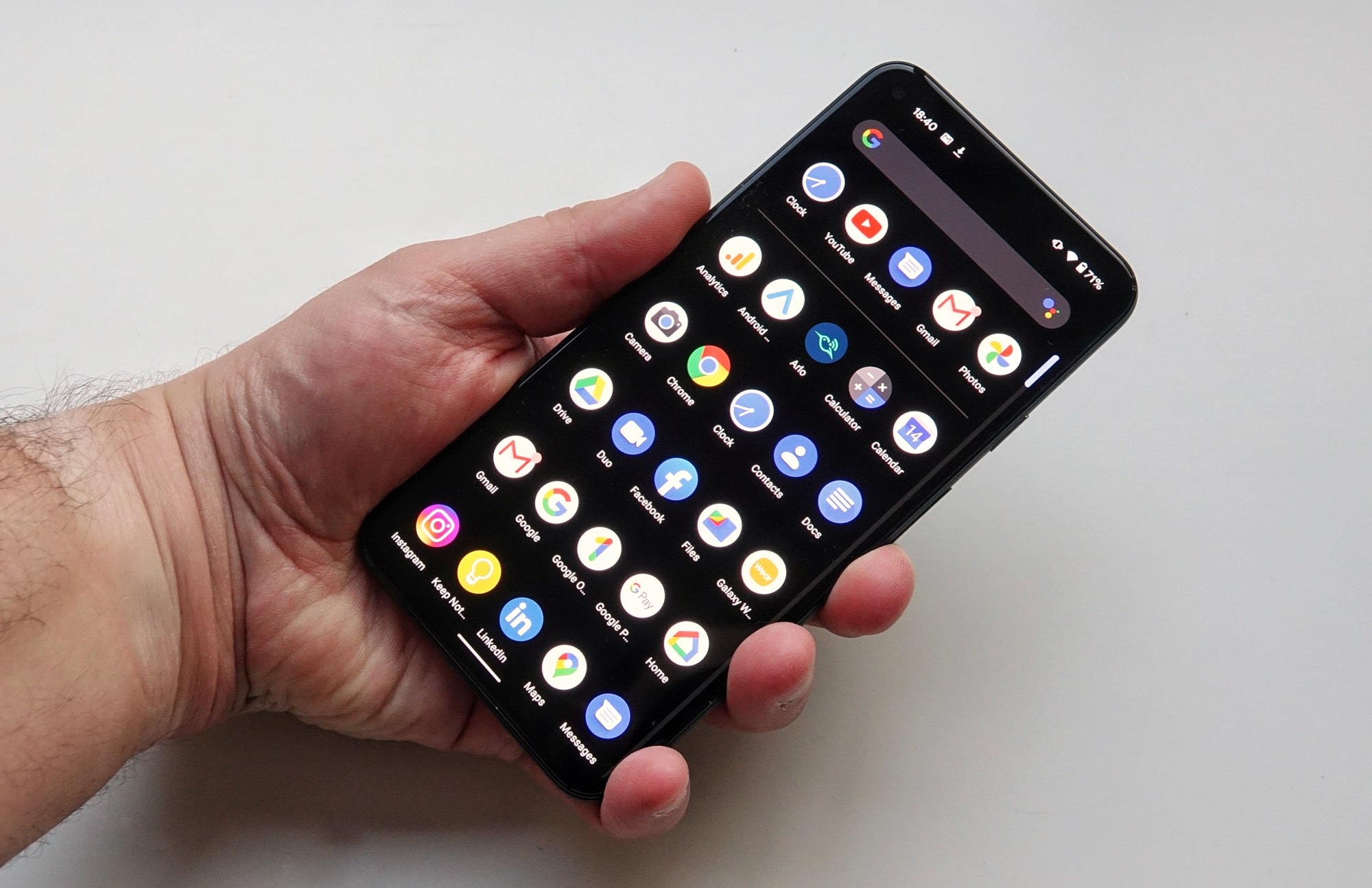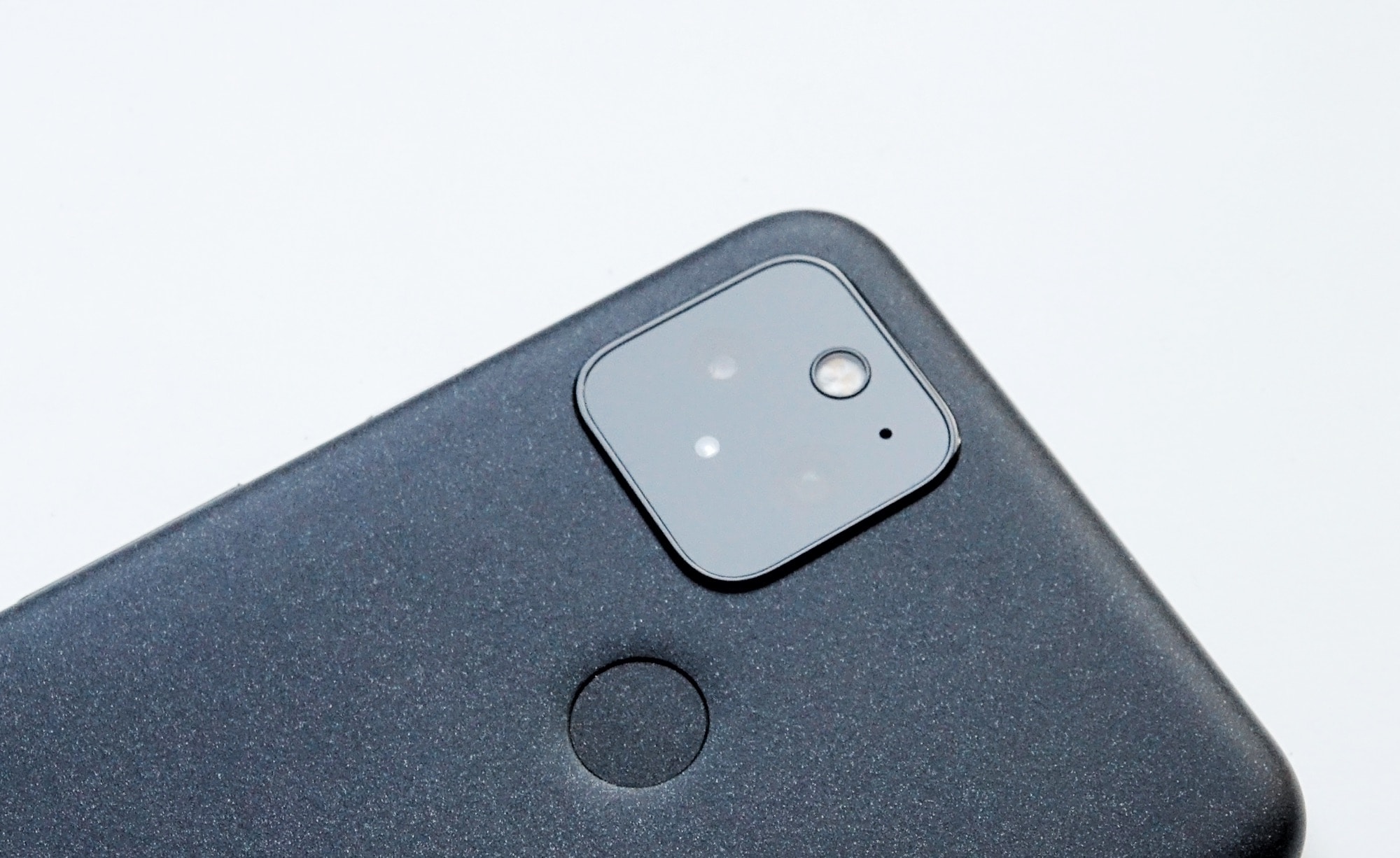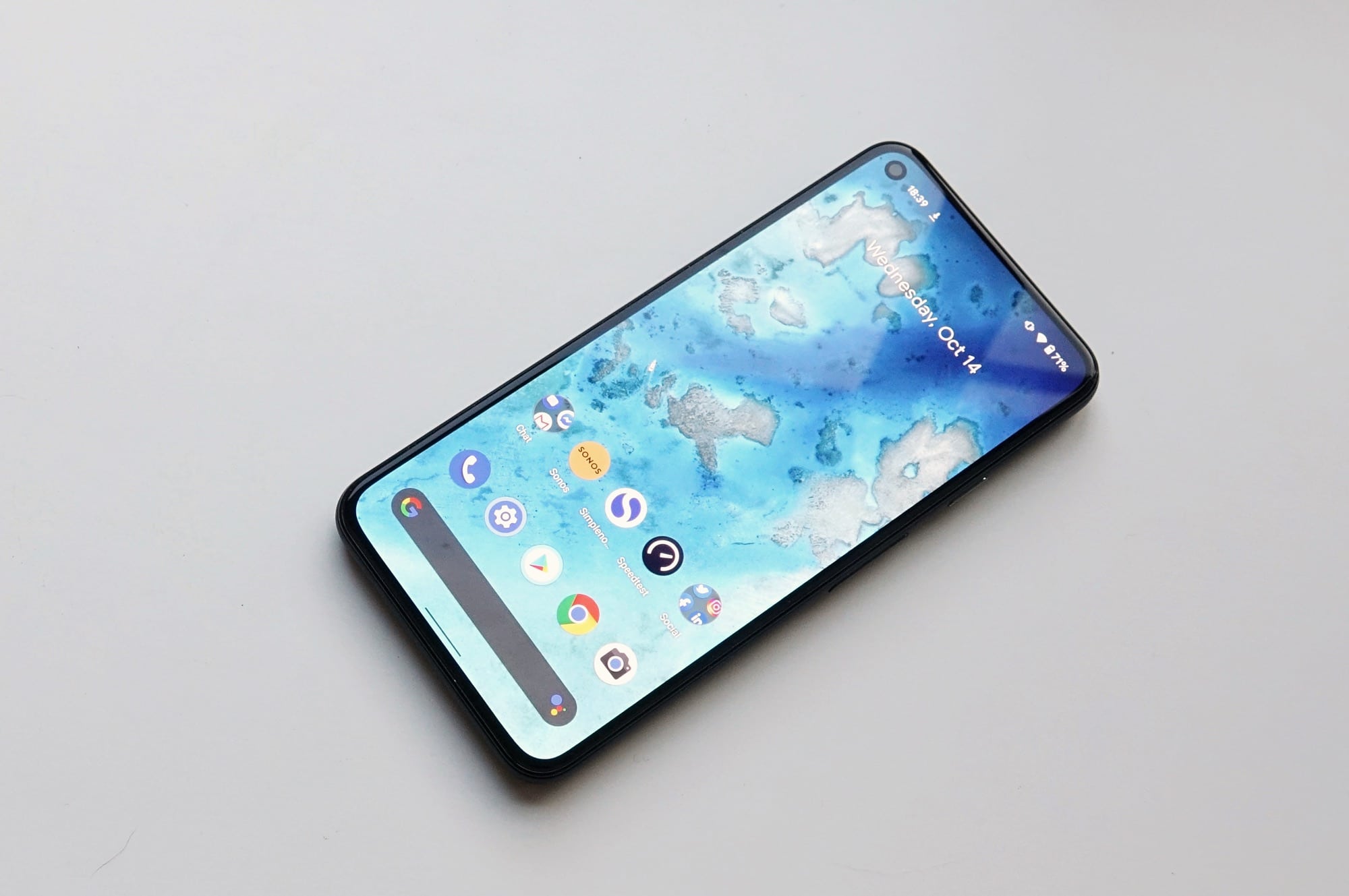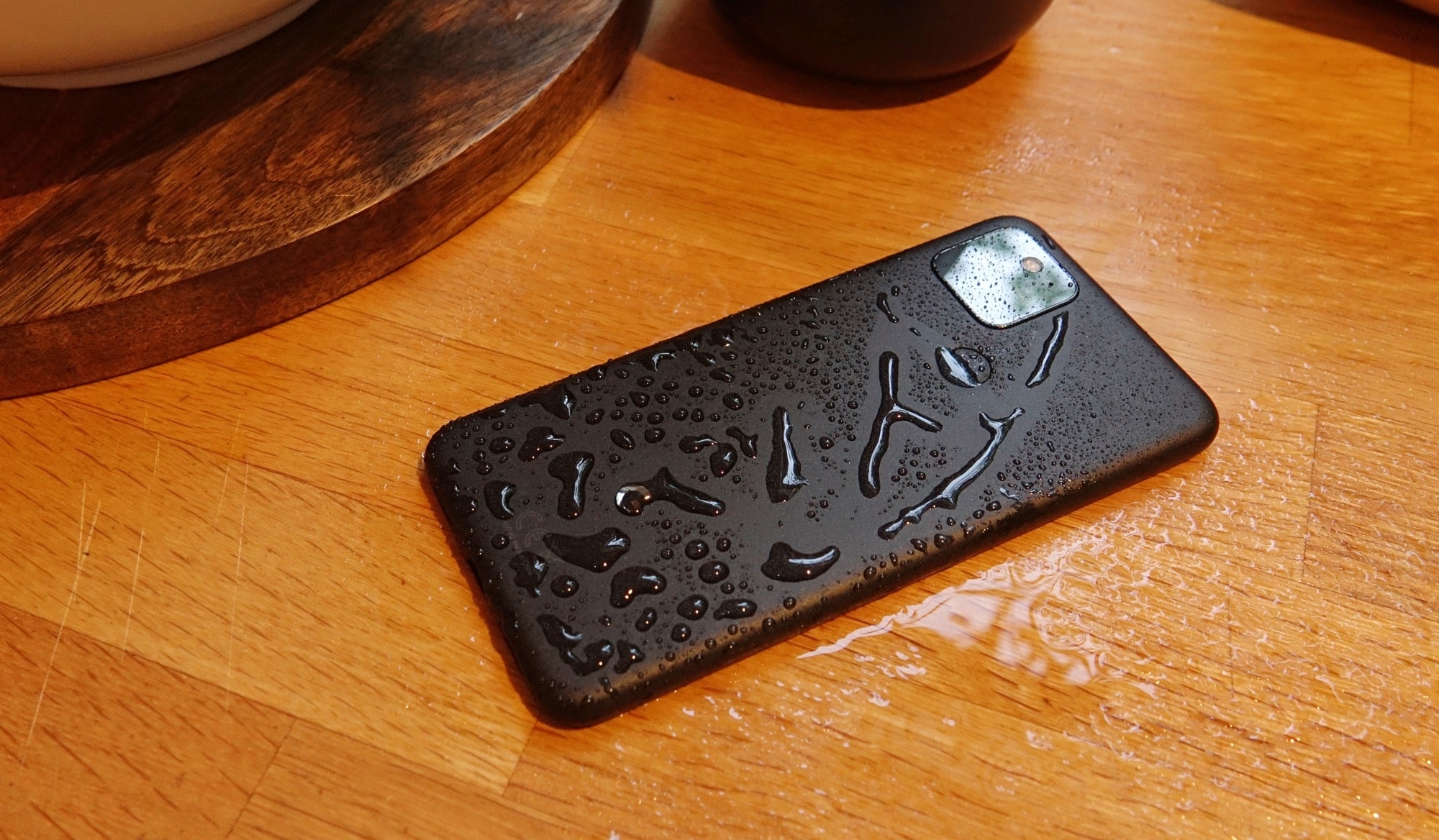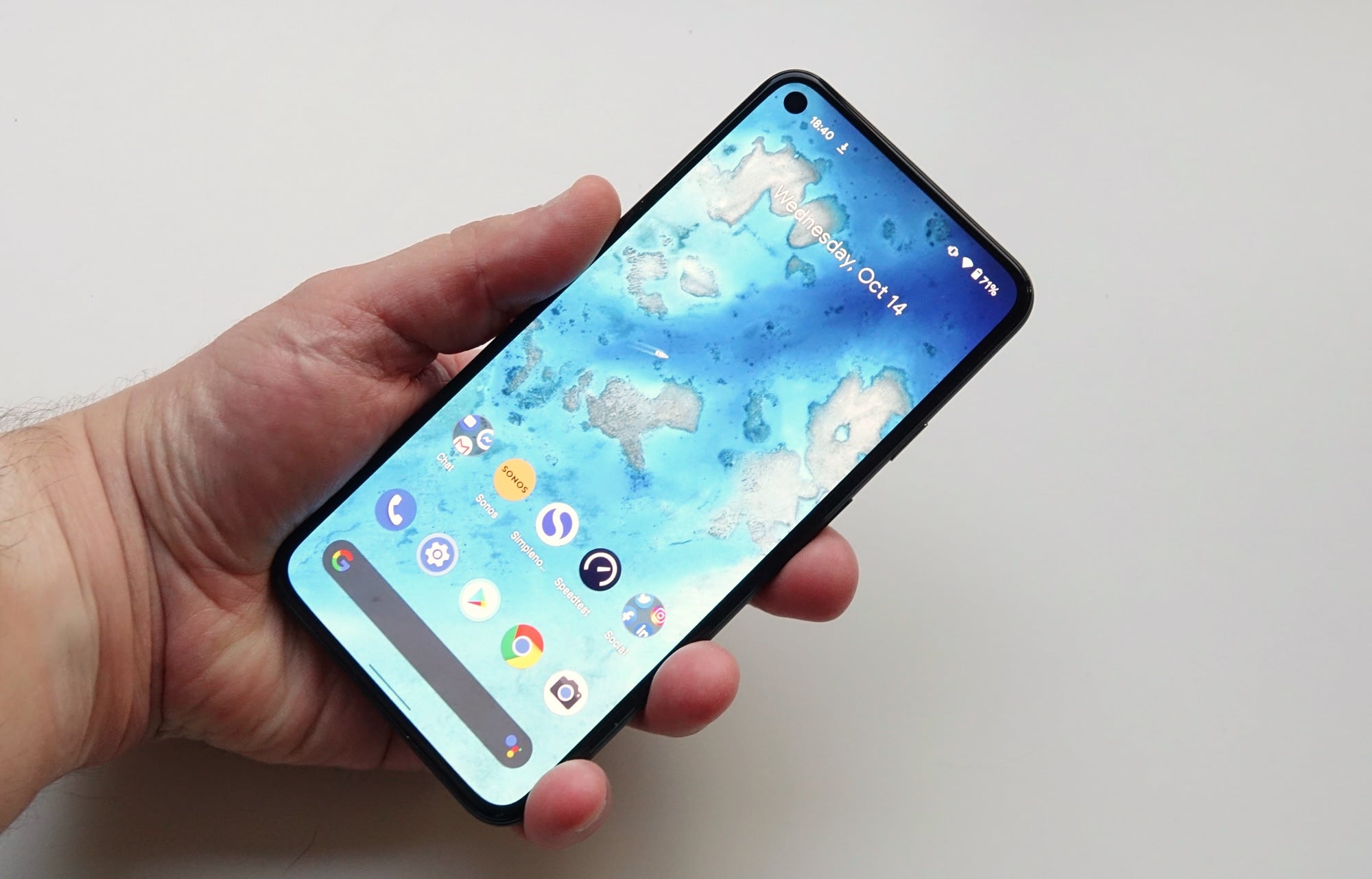Quick review
The good
The not-so-good
Not sure if you can justify the over a thousand dollars on a new phone? The Google Pixel 5 makes the case for why $999 is the new sweet spot.
Take a glance at the phone world lately, and you might see beads of sweat form on your forehead. Wipe them away as you gulp back a thought that a new phone will cost you a lot.
These days, it can seem crazy that to invest in a new 5G phone might require the sort of money needed to buy a laptop, but that’s where we are. Phone prices have hit past the thousand dollar mark, and have pushed right into $2K and damn near three. It’s not a great place to be, especially if you want a phone that looks good, performs well, and seems like it could stand the test of time.
But there are some companies looking to change the way we feel about phones, and Google might be one of them. The maker of Android has changed what its Pixel phones are all about, and with the 2020 flagship Pixel, the Google Pixel 5, the focus is on delivering 5G and value, together with all the things you might want in a phone, complete with a maximum price of $999. Is this 2020’s best deal?
Design
Featuring an aluminum chassis on what is basically a more premium version of Google’s Pixel 4a, the Pixel 5 will seem familiar and easy at first glance.
Upon that first glance, the Pixel 5 has more in common with Google’s lower-priced Pixel than it does its previous flagship, offering the same style of screen, complete with the corner hole-punch screen some manufacturers are calling a “dotch”, as well as a back with the squircle camera shape found on the last Pixel flagship, yet the fingerprint circle found on the last budget Pixel.
More like a blend of both worlds, the Pixel 5 is an aluminium encased take on the Pixel 4a, at least in design, probably because that’s a Pixel that works incredibly well, and that’s a great template to come from.
As such, the Google Pixel 5 is an easy handset to connect with, because it looks like the mid-range take, only more premium, and there’s slightly more going on here, too.
Beyond that obvious nod to the plastic Pixel 4a, Google has a few tricks in the design. For starters, it’s water resistant, sporting the IP68 dust and waterproof rating we keep yearning for in the “a” range of budget Pixel phones.
But there’s a little more, too.
You see Google’s use of aluminium is interesting because there’s also wireless charging, and much like how water and electricity don’t mix, metals and alloys including aluminium aren’t particularly fond of wireless charging, either.
And yet they’re both here on the Pixel 5, which means Google has found a way to give an aluminium chassis the ability to be wirelessly charged. Google told us it has to do with a bio-resin and a couple of small plastic covered circles designed to sit in with the aluminium body, which essentially makes it possible give a metal body wireless charging. Cool.
Features
Under this aluminium casing, you’ll find some specs that are largely pretty similar in the world of 5G phones right now. While the Pixel 5 might read as a flagship, what’s under the hood is a little mid-range, thanks to the Qualcomm Snapdragon 765G processor, paired with a decent amount of memory, sitting in at 8GB RAM and 128GB storage. Like all Pixels before it, that 128GB is locked in and cannot be upgraded.
There’s also two cameras found here, including a 12 megapixel standard wide camera set to F1.7, as well as a 16 megapixel ultra-wide set to F2.2, and a flash alongside that. Both of these cameras can also handle video, which can capture at a maximum of Ultra HD 4K. Meanwhile on the front, Google has equipped an 8 megapixel F2.0 camera.
Connections are pretty standard for a high-end phone, with 802.11a/b/g/n/ac (no WiFi 6 802.11ax sadly), as well as Bluetooth 5, GPS, Near-Field Communication (NFC) for Google Pay and other things, plus the support for high-speed 5G, too.
There’s also a fairly sizeable 6 inch screen in this model, but only one variant, with no Pixel 5 XL. That means you’ll find only the 6 inch 2340×1080 screen with 432 pixels per inch of screen clarity, though on the Pixel 5 you do get support for the 90Hz refresh rate, which can smooth the animations while using the phone.
This sits inside of a relatively slim 8mm body weighing 151 grams, sporting IP68 water resistance, and with only one wired physical port: the Type C USB port at the bottom, which works for data, charging, and audio, too.
A fingerprint sensor can be found in a recessed circle at the back on the aluminium casing, covering a 4080mAh battery that supports wireless charging.
In-use
Beyond the specs, you’ll find Android 11 in its most Google-like configuration here, thanks in part to this being a Pixel. Being a Pixel means you get Google’s Android the way the company who makes it says it should look, and that means you get all the features Android 11 comes with, including a shortcut bar that can update your shortcuts based on how you use the phone, a live caption mode that can caption videos in the background, and a power screen that’ll show you the smart home devices in your home, and let you switch music around.
Android 11 is easily one of the nicest versions of Android yet, and it’s very easy to connect to. Frankly, we found the shortcut changing by an intelligent system one of the nicer features, regularly switching out our second icon for things we regularly used.
With the soft buttons now entirely gone from Google’s OS, Android’s full-screen experience is delightful to get behind, provided you simply remember a swipe from the left to the right goes backwards, a small swipe from the bottom goes back, and a larger one brings up multitasking. You’ll get the hang of it after a few times, we suspect.
The small learning curve out of the way, Android 11 is slick and stylish, and doesn’t get in your way when you’re trying to use a big screened phone, and that’s good given you’re going to use a phone for its apps and feature set to wrench the most out of its performance.
Performance
Armed with the Qualcomm Snapdragon 765G and 8GB RAM, the Pixel 5 feels at once familiar given the other phones come with this combination in 2020. Google’s phone isn’t new or alone in this approach, and you only have to look at the LG Velvet, Motorola Edge, and Nokia 8.3 to see the template being used for mid-range 5G phones.
We’re not sure if the Pixel 5 is being considered mid-range by Google or not — it certainly reads that way on specs and price, especially compared to the past four years of Pixel phones — but the phone handles itself nicely, with the device never letting up. Between the 8GB RAM and Snapdragon 765G, not to mention Android 11 without any extras, the Pixel 5 is a champ, and really delivers performance.
And that stands true on the 5G side, as well, which is clearly new for Google, but does a solid job overall.
While 5G reception and reach is still a bit of a question mark at each carrier, once you’re in range, you should see high speeds if you can see them, and decent performance. We’ve not yet hit the gigabit speeds 5G is capable of on the Pixel 5, but we suspect that comes back to the carrier, rather than the phone itself.
Given what’s inside here, you should be good with mobile networks for years to come.
Camera
And you should be good with the cameras, too, because while Google has removed one of the camera modules we liked in last year’s Pixel 4 XL, there’s still a lot to like about what the Pixel 5 cameras offer.
Let’s start with what’s impressive about the camera system on the Pixel 5, because there are things that clearly work.
Like regular photos, and day or night, the Google Pixel 5 camera system just handles what you throw at it. Unsurprisingly, Google’s camera and imaging processing system handles colours and brightness practically flawlessly, and the images you get out of it really handle the scene recreation and rendering beautifully.
Google’s take on portraiture is still one of the best in the business, and being entirely software, spits out both a version with the softened background and without, and at both the front-facing selfie camera and better rear cameras.
New in 2020 is the support for night portraits, which just delivers in ways not unlike a good low-aperture lens. Google’s claim for a night portraiture mode was a fairly bold one, thanks to just how shaky (literally and figuratively) a low-light portrait always is: they’re closer, mean less light, and subsequently also have to deal with low-light noise from the darks, giving Google just so much to do and work with.
And yet, Google has delivered.
At night and in practically zero light, the portrait mode handles very well, delivering a surprisingly sharp image with some semblance of available light. We tried a test using both the Pixel 4 XL and Pixel 5 at arm’s length outside in the dark with no light save for a small amount of lighting coming from the home, and the difference is clear: while the light rendering is similar, where the Pixel 4 XL below (left) struggles to even get a sharpened face, the Pixel 5 (right) handles it no sweat. It is genuinely impressive.
Bold claim achieved. The Google Pixel 5 camera is indeed impressive, and borders on remarkable.
There are other things you can do, too, such as set the Pixel 5 on a tripod and capture long exposures, something that was new last year, but now seems to deliver even more. Light up the backyard and take a look at the stars, just make sure you bring some form of a tripod otherwise you’ll be limited to a few seconds, rather than the few minutes Google works through in the Pixel 5.
What the Pixel 5 doesn’t do so well is with macros and getting close via a telephoto, and there are perhaps two reasons for this.
On the former, the focusing distance for either lens isn’t amazing, so you can’t really get the Pixel 5 camera remarkably close for macro images, losing out on an area Oppo seems to be winning in 2020 with the Find X2 Pro.
When it comes to getting close using a telephoto, that is also missing in action in the Pixel 5. While you might have had a telephoto lens in the Pixel 4 and Pixel 4 XL, it is gone from this model, and sadly missed. You do get some digital zoom in its place, and coupled with Google’s image algorithm mastery, it can be very nice, but we can’t help but think Google would have done a better job if its flagship Pixel 5 would have included three cameras: ultra wide, wide, and close.
The way it is now isn’t bad, but it’s also what you get on the mid-range 5G phone, the Pixel 4a with 5G, which is about $200 less expensive, and clearly not a flagship phone. Without that level of zoom, Google’s Pixel 5 loses a mark and feels less flagship at the same time.
Battery
Battery life is also quite strong, too, giving you an idea of somewhere Google has worked on. It’s an area competitors are getting better at, so much that over the years, Oppo and Huawei have wrenched more life out of their Android phones than Google. Talk about a yikes moment.
In the Pixel 5, though, Google has redeemed itself, with almost two days possible from the phone, placing it in a good day and a half, provided you don’t overuse the camera.
We suspect most people will hit a full day and charge the phone nightly, but we were able to go 36 hours while using the camera a fair bit, so the phone is very capable of maximising battery life without even trying. That might also come down to Google’s use of the 90Hz adaptive screen technology, which clearly doesn’t need to be on all the time, and means the battery can be saved. Alternatively, you can turn it off, and you’ll probably see a smidgen more battery life, as well.
Value
One area that’s hard to look past is the price: Google’s best Pixel in 2020 is under a thousand dollars. Yikes.
That’s low even by Google’s standards, with last year’s Pixel 4 range starting at $1099 for a 64GB Pixel 4, compared to this year’s 128GB Pixel 5 at $999. Granted, there are some pretty major differences, and spec-wise, the drop in chip class from flagship to just below flagship is one.
But at $999, Google is playing not just in the same below-$1K price spot as the likes of LG, Moto, Nokia, and Oppo, but also the big boys with their flagship phones that push well past it.
At $999, the Pixel 5 is a solid value, delivering everything almost everything you might in a phone, alongside a price that won’t hurt quite as seriously as others. That’s hard to argue with.
What needs work?
But it’s not perfect. There are things that need a bit of work, and they need to be touched on.
For the most part, the Pixel 5 delivers, and in spades. It is an excellent Google phone, and in one move, makes the flagship Pixel phones worth owning once again, after a good two years of ho-hum devices.
The first Pixel was great. The second Pixel was great. The third Pixel was ok. The fourth was fine, but came with some serious issues. And this one, the fifth flagship Pixel, is a fantastic phone that is hard to fault.
But there are some points that feel like Google has found its way back to this winning status, and they come from what feels like a bit of a backpedal.
It is unusual in technology to see companies go backwards, to say the last idea they had wasn’t as good as expected, so they were removing it. Technology is about progress, and so when technology goes the opposite way, you have to ask why. Why did a company decide to remove a feature that should have been improved to deliver a better version?
When the first OLED screens came out, they were nowhere near as capable as the models we have today, and so through improvement, they got better. The same is true of cameras in phones and facial security and a whole bunch of other things. Research and improvements and updates improve technology on the whole, and yet the Pixel 5 is not really indicative of that. In many ways, it’s a reversal.
The Pixel 5 is Google learning from how successful its Pixel “a” series has been, and that the best stuff is generally the stuff that works, rather than the innovative stuff that can feel ahead of its time.
Take the Soli radar technology used for motion gestures in the Pixel 4 range, because that’s gone. We didn’t find much of a use here, but it’s gone and not part of the package in the Pixel 5. And the facial security is gone, too, despite Apple finding ways to make it better, while other brands — Samsung and Oppo, for instance — finding ways to bring both the fingerprint and facial security together.
Google has back-pedalled on both, and the Pixel 5 doesn’t have either, despite the Pixel 4 being driven by both.
And that squeeze thing found on the Pixel range since version two? That’s gone, too. A cute feature that you might want to remap to act as a button, Google has taken it out of the Pixel 5 design.
Even the telephoto camera from the Pixel 4 XL — which gave Google some of the footing of zoom cameras as other big name competitors — is gone, too.
These omissions seem more than odd; they seem crazy. How has technological development improved by the removal of so many features from a high-end phone?
That’s what we find so alarming about the Pixel 5, because in trying to find a way to compromise and deliver a best in class phone, Google went backwards, and found a way to improve its mid-range phone to make it best in class, while largely leaving its flagship pursuits behind.
And none of this is to downplay how strong the Pixel 5 is as a phone: the Google Pixel 5 is a seriously good 5G phone, especially in a year as weird as 2020. But it’s also a phone that feels more like a marginally better Pixel 4a — a marginally better mid-range phone — and we’re not sure that’s really what the flagship range is all about, or what it’s supposed to be all about.
However one could argue it is, because that’s what the Nexus was all about you.
You can look back at Wiki for that one, but the Nexus 4 was a Google phone that set a benchmark for delivering everything you needed at a price that made sense. At the time back in 2012, it was a phone that managed to score accolades, and beat the competition by being the best for the price.
And one could argue that beyond the naming convention in the Pixel 5, that’s precisely what Google has delivered. Beyond all the high tech fancy features that Google has ever piled into its Pixel flagship phones, the Pixel 5 delivers exactly what a phone in 2020 needs.
Though if we’re honest, we’d probably be even more satisfied if Google had left the telephoto camera, because that really would have helped make it perfect.
Final thoughts (TLDR)
At the end of the day, the Pixel 5 is one impressive little phone. While it removes much of what made the previous Pixel innovative, Google has nailed what a phone should be these days. This is a Pixel that delivers, and that’s what we want.
The Pixel 5 might not feel quite as flagship as some other phones out there, and it may not lead with innovative ideas, but it brings together everything we want in a flagship Pixel in a way that comes together, stands out, and works.
Perhaps the biggest downside Google has going for the Pixel 5 is that it risks being undercut by its sibling, the Pixel 4a with 5G, which is almost identical, save for design, a lack of wireless charging, and a screen type virtually no one is going to notice the difference of. If the 5 had a third camera, it would clearly overshadow its sibling, though it may not need that.
In fact with its feature set, Google has somewhat returned to what it initially became known for in phones: producing great devices with tremendous value. While the Pixel 5 doesn’t quite deliver the value of its 4a sibling, it is very impressive all round.
And that’s largely what the Pixel 5 is: a return to what made the Nexus great, producing a flagship phone at a less-than-flagship price. It’s a fantastically solid choice that nails almost everything you could want in a phone. While it’s not quite the same flagship as everything else, it’s enough of the best for all. A great choice, the Pixel 5 is highly recommended.



